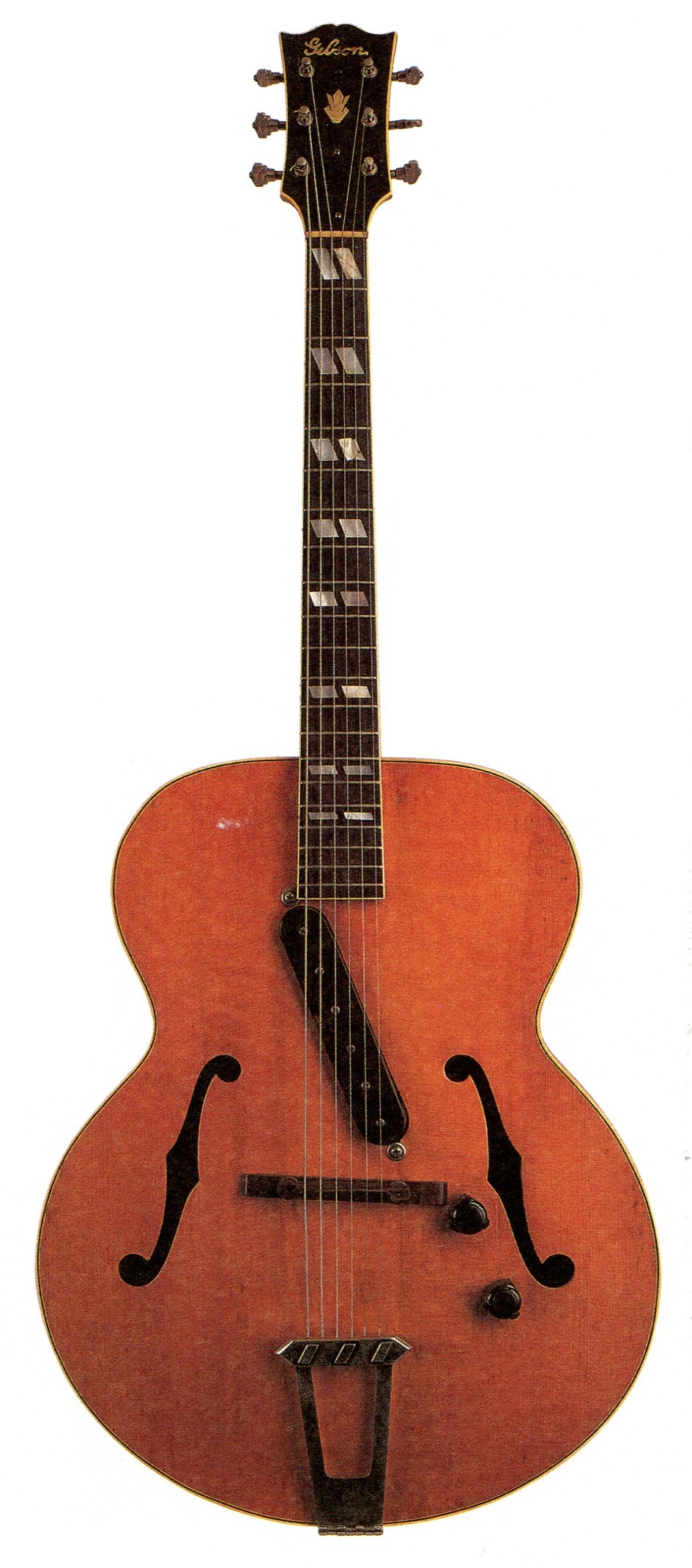Gibson ES-300N

Gibson’s original pickup, nicknamed the “Charlie Christian”, is still prized by some jazz guitarists today, but it’s one-piece bar polepiece had severe limitations.
To allow players to adjust the signal level for each individual string, Gibson appropriated a concept from it’s arch-rival Epiphone and developed a pickup with height-adjustable screws for polepieces. The new pickup got a new housing – an oval, tortoiseshell-pattern celluloid cover – as well as a new model to introduce it.
The ES-300 of 1940 featured this new design in what may be a record for pickup length: over seven inches. The slanted configuration made the low strings more bassy sounding and the treble strings more brilliant, but amplifiers of the day weren’t equipped to exploit the increased tonal spectrum, and a more economical-sized pickup quickly appeared.
The ES-300 introduced two new visual elements to the Gibson line: double-parallelogram fingerboard inlays and the “crown” inlay on the peghead.
